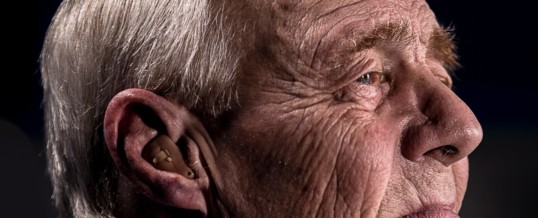
While both the outer ear and middle ear (which were discussed previously) are amazing and complex, the inner ear is perhaps the most amazing and most complex. While the world of the outer ear and middle ear are full of air, the world of the inner ear is filled with watery fluids. So, are you ready to take a plunge into the aquatic world of the inner ear?
For the sake of simplicity today, we will divide the inner ear into two main parts: the semi-circular canals and the cochlea. The semi-circular canals are three tubes at right angles to each other. They do little to affect hearing, but rather provide humans with a sense of balance. Each canal is full of a fluid with mineral bits called otoliths that interact with little hairs on the inside of the canals any time the orientation of the head changes. In effect, the semi-circular canals work as biological accelerometer sensor. This helps you keep track of up and down, left and right, and rotation, and is also partially responsible for the experience of dizziness and vertigo in some cases. This is one of the coolest superpowers of the ear—it gives you your sense of balance.
The cochlea, on the other hand, is what gives you your sense of hearing. It is a snail shell shaped structure divided into two parts along the spiral. If it helps, you can think of these as an upstairs and a downstairs part of the spiral with a crawlspace between where all the sound sensing happens. When vibrations from the bones of the middle ear cause the oval window to move, the vibrations travel through a fluid called perilymph. Vibrations in the perilymph travel along the (upstairs) two-and-a-half turns of the cochlea before traveling back out along the (downstairs) second half of the spiral.
As vibrations travel down and back out of the cochlea, the division (the crawlspace) between the two halves of the spiral, a membrane called the basilar membrane—vibrates. Tiny hairs along the basilar membrane trigger electrical signals which are sent to the brain where they are interpreted as sound. Pretty cool!
But that’s not all. The range of human hearing is gargantuan—from 20 Hz to 20,000 Hz. In order to process such a wide range of frequencies, the basilar membrane has a nonlinear logarithmic response and a non-uniform shape. Depending on the location along the basilar membrane where the hairs are most stimulated, the ear hears different pitches. High frequencies are picked up close to the oval window as sound enters the cochlea while low frequencies are picked up far from the oval window. The greater the motion of the hairs, the higher our brains interpret the intensity of the sound. All these effects combine to produce the ability to hear nearly 20,000 frequencies of intensities varying from the sound of a mosquito buzzing to a lawnmower revving.
At the start of this series, we asked this question: Have you ever wondered why there are three parts of the ear? Hopefully now you have your answer. We need an outer ear to trap the sound, a middle ear to amplify the sound, and an inner ear to transduce the sound into electrical signals for the brain. With so many superpowers—catching sound, speech optimization, impedance matching, pressure relief, mechanical-to-electrical signal transduction, and balance perception—it is at the center of so many fields. Those of us who work in acoustics owe our livelihood to it.
So next time someone talks to you about ear health or acoustics, listen up. You might just learn something new.
Further Reading
https://en.wikipedia.org/wiki/Inner_ear
https://www.who.int/occupational_health/publications/noise2.pdf
JUL
2019

About the Author: